If you’ve been to Europe in the winter, or to similarly cold and snowy places, it’s likely that you’ve seen men (and some women) wearing long and sturdy overcoats, walking comfortably while staying unruffled by the cold. One such style is the loden coat (alternatively referred to as the loden cape)–and we think it deserves a closer look.
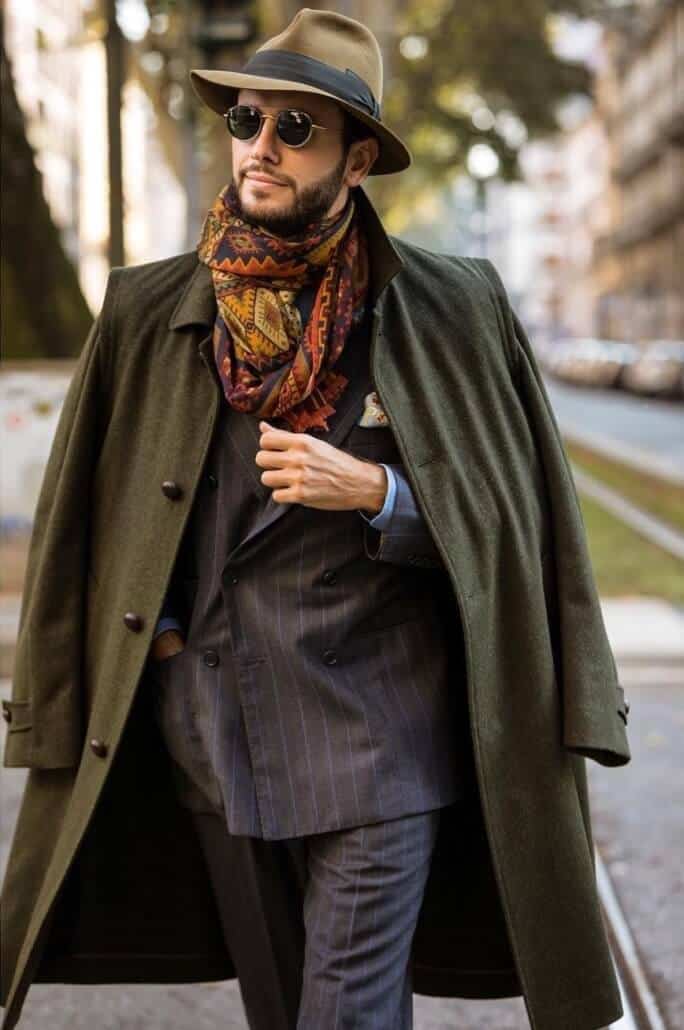
Origins of the Loden Coat
This particular style of coat has its origins in the Alps, particularly the Austrian state of Tyrol. Regarding its name, however, “loden” is actually a collective term for how the fabric of the coat is made. The term is derived from “lodo,” an Old High German word which means “rough fabric.”
Originally worn as workwear by farmers, shepherds and huntsmen, the loden was designed to be a protective, functional garment against the harsh winters of the Alps. The material used needed to be weather-resistant and easy to clean. According to a 1573 edict issued by Archduke Ferdinand II of Tyrol, these so-called “peasants” were ordered to wear only wool, linen and loden. Finer, more delicate fabrics were a symbol of sophistication and prestige, reserved only for nobility and the church. This would hold true for centuries, until loden made its way to the cities of Europe.

Loden Makes its Way to the Nobility
In the early 19th century, Archduke Johann was commissioned by his brother, then reigning Emperor Franz II, to the Tyrolean Alps after his army faced defeat against the French revolutionary forces. There, he developed a deep appreciation of the alpine lifestyle and culture, marrying a commoner and wearing loden garments. Hunters in the area observed the Archduke wearing loden and followed suit.
During the reign of his nephew, Emperor Franz Joseph I, who was a hunter, the Tyrolean people were commissioned to produce loden wool exclusively for the Emperor. In the age of Romanticism, the nobility developed a growing interest in folk culture, leading to the widespread adoption of loden and making it a signature fabric for aristocrats’ garments, diminishing the notion of it being for the working class.
In the 20th century, loden coats made their way to the metropolitan cities of Europe and the United States. They remain a reliable classic to this day.
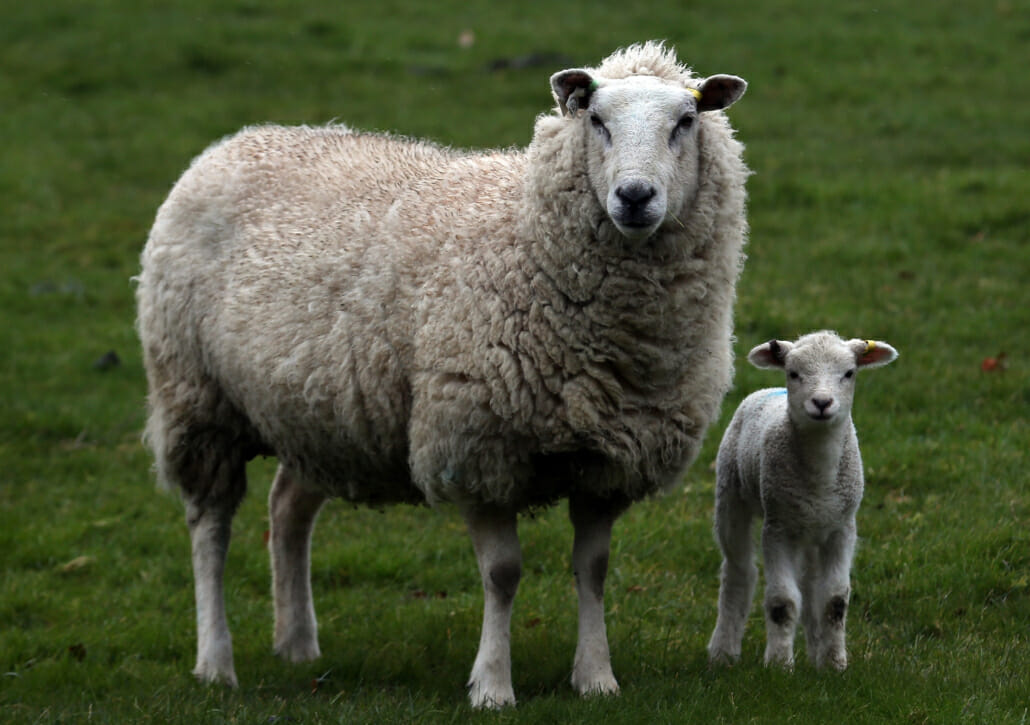
How Loden is Made
Producing loden is a long and careful process, making it a staple material for prestigious, classic European clothing. Expert shearers remove a naturally oily, blue-green wool from alpine sheep. The wool is woven loosely and treated through wet finishing or milling; it shrinks, becomes dense, and is given a felt-like finish with teasels. Then, it is brushed and sheared up to 20 times until the desired napped, fuzzy surface is achieved. It can be dyed any number of colors, such as red or black, but the most popular shades today are brown and a rich, dark green (echoing the natural color of the wool fibers).
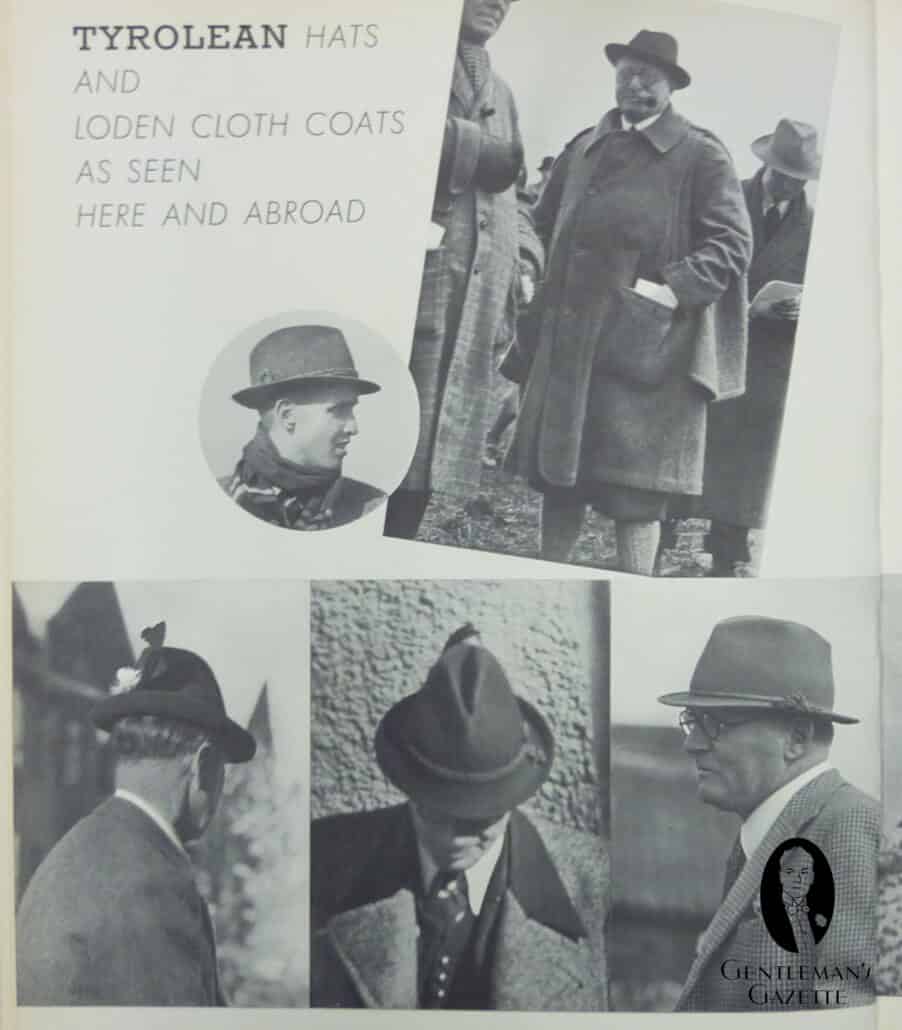
What makes the Loden Coat Special?
Because of the highly deliberate process of how its fabric is made, a loden coat has unique characteristics that make it extraordinary. Apart from being a dapper wardrobe staple, here are some reasons why this classic never goes out of style.
It Keeps You Warm–Really Warm
Designed as a functional garment in its earliest days, the loden coat is renowned for its weather-resistant properties, keeping out the cold, wind, rain, and snow of harsh winters. The fabric’s structure regulates the temperature of the body to manage extreme cold. Meanwhile, the sturdy form keeps the wearer looking stylish while also staying warm.
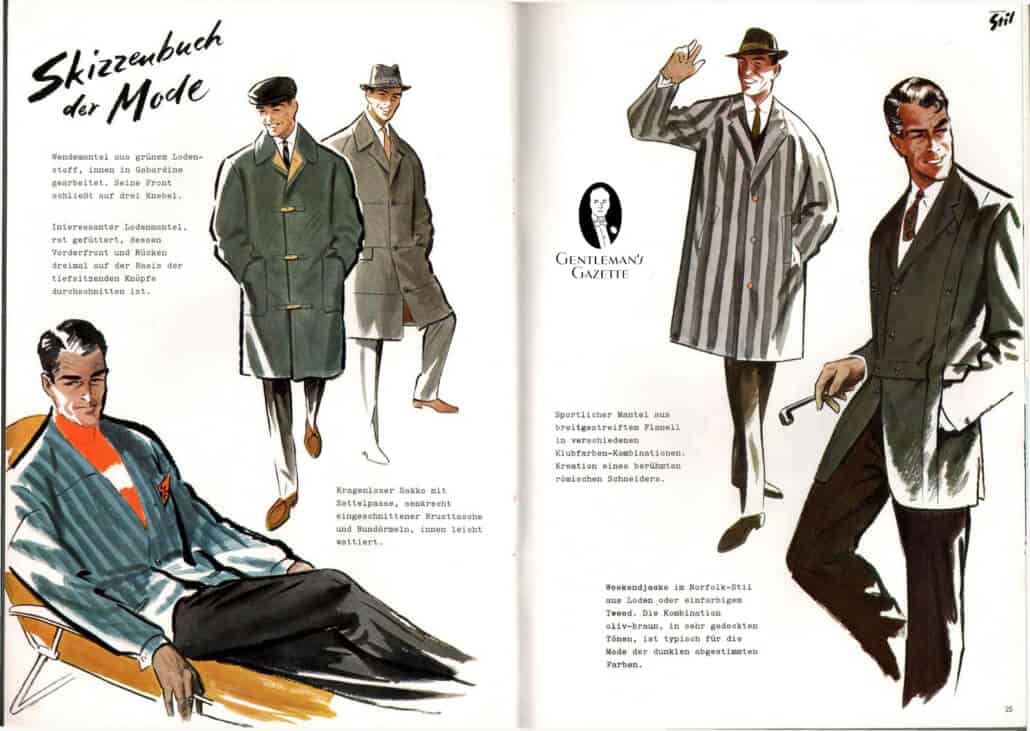
It’s Water-, Oil-, and Even Fire-Resistant
The process of brushing and combing the already-resistant raw wool to finish the fabric makes it largely impermeable to water. Following some more careful rounds of treating and brushing, the fabric is also made oil- and fire-resistant. In this way, loden can be seen as one of the first high-performance, durable, and easy-to-clean fabrics to be manufactured. It may sound as if nothing can get through it, but the loden coat, fortunately, doesn’t fall short of being breathable. The intricate interlocking of brushed wool creates microscopic pockets that let air pass through.
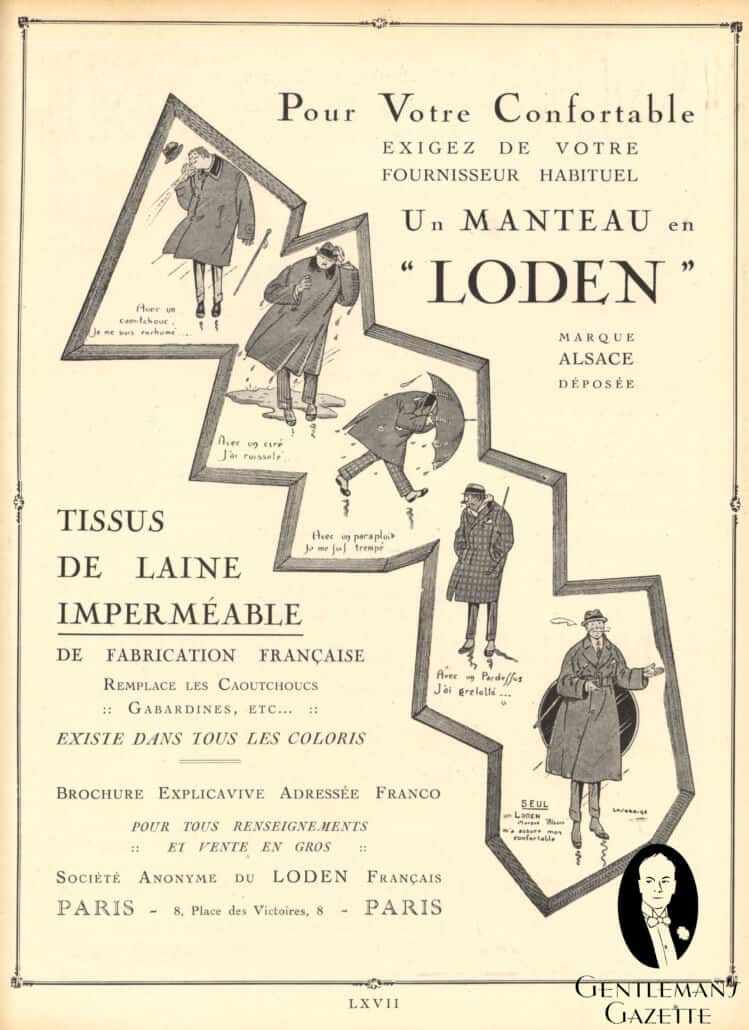
It Will Stand the Test of Time
Only the most natural and durable raw materials are used in a quality loden coat. Think of it this way: the thick wool of the alpine sheep protects the animal from the cold, and even from injuries. That’s why, when well cared for and cleaned, a loden coat can be maintained for decades, if not longer. Best of all, the style is timeless, so a loden coat is truly a classic piece made to last for generations.
The abundance of coats in various forms and made from different materials has diversified menswear over the centuries. As each style has served different aesthetics, levels of comfort, and functions, men have had myriad options. And while some were simply trends, the loden coat has remained a timeless piece worthy of investment. Its rustic-yet-refined style elevates winter outfits while withstanding the cold.
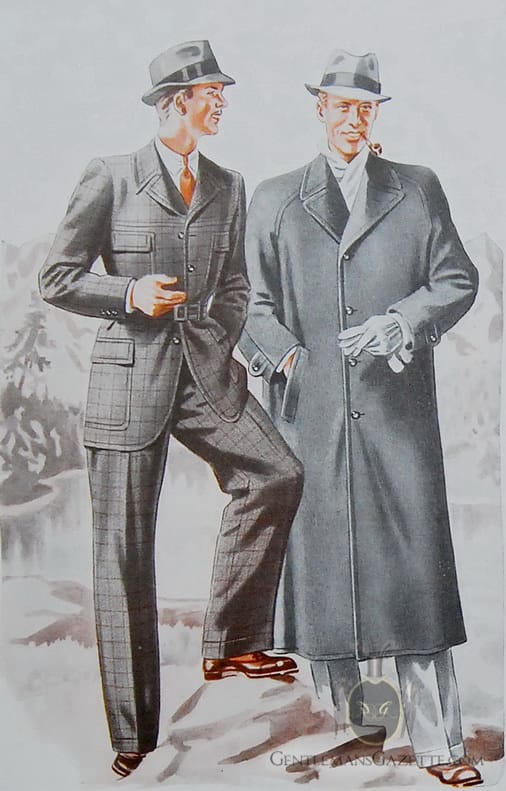
How To Wear The Loden Coat
Suits
Being a versatile overcoat, the loden can be worn over suits for more formal business attire. With minimal details, the signature moss-green models can be combined with staple suiting shades like navy, charcoal, and brown, and even pinstripe or chalk-stripe patterned suits in muted or minimally contrasting colors. Suits in textured wool fabrics also look great with the loden coat, while adding further insulation in the fall and winter seasons.
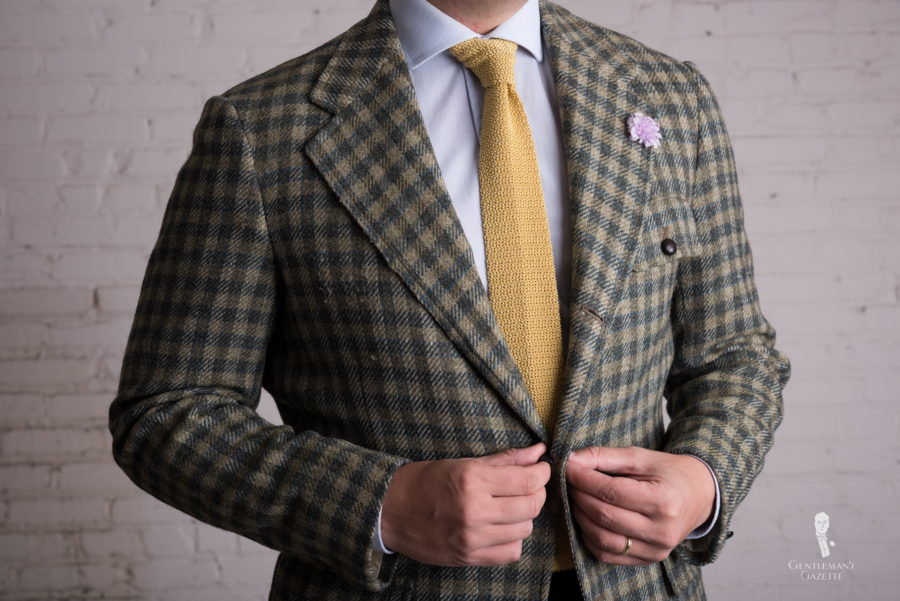
Sport Coats
Echoing our advice for suits, so too can the loden coat be worn with a combination of sport coat and odd trousers. In particular, the similarly rustic-to-refined tradition of tweed means that ensembles incorporating a jacket of this fabric would be well topped-off by a loden coat. Our recommendations for color are in line with those for suits. (As a brief aside, consider an odd waistcoat, as well!)
Trousers
Returning again to the point of textures, corduroy trousers in brown, gray or tan provide a smart contrast to a loden coat. For more casual ensembles, you could try chinos or jeans–but as advocates of classic style, we’d recommend you do so cautiously. It’s important to strike a good balance in the level of formality of the outfit; while the loden coat is quite versatile, anything less formal than something within the “Smart Casual” dress code would be a bit of a stretch.
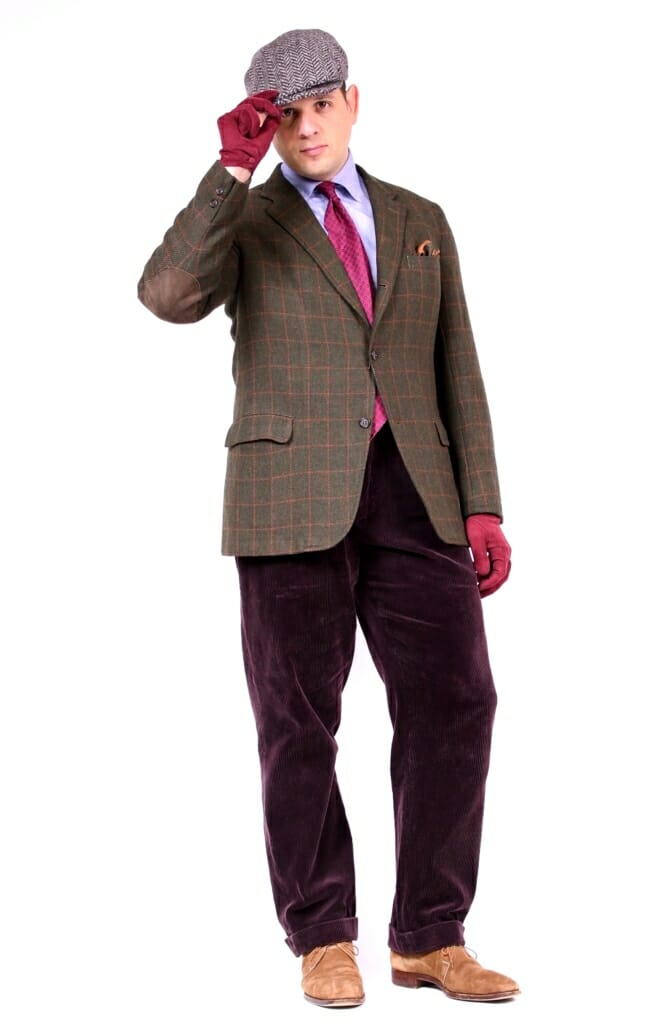
Shirts
When it comes to shirts, a wide range can be worn with the loden coat–from white or light blue dress models to button-downs in checked patterns. These combinations provide contrast while maintaining a classic aesthetic. You might also try darker-colored flannels for a more muted or monochromatic look.
Knitwear
Another stylish partner for the loden coat is knitwear. Sweaters in blue, brown, or gray (over dress shirts) not only provide additional warmth, but also pair the supple texture of the coat with the light and comfortable feel of a knit. In more modern or casual styles, turtlenecks could also be worn under the loden coat.
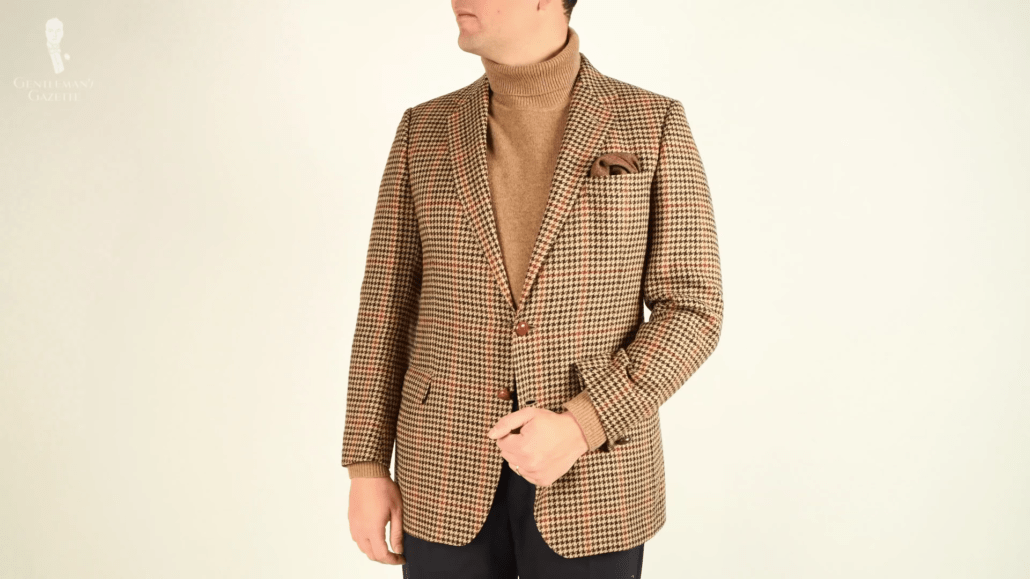
Shoes
For footwear, brogues and wingtips are ideal options to pair with the loden coat, to maintain just the right amount of formality and casualness. While they come in a variety of colors, brown, oxblood, and grey suede provide a good contrast and complement loden well. When leaning towards a more casual look, desert boots are also a good choice.
Gloves & Scarves
Gloves and scarves are classic additions to a cold-weather ensemble. Other than increasing one’s insulation for colder climates, they also provide a pleasing pop of color. Burgundy, tan or chestnut gloves look smart–and for added convenience when using mobile devices, touchscreen models are available on the Fort Belvedere Shop. For scarves, lighter colors like orange and yellow draw attention to the face, and patterns will add personality to the ensemble as a whole.

More Accessories
Classic outfits are always best supplemented with accessories. Solid or mottled knit ties add texture under the loden coat. Ties with paisley, polka dots, and striped or checked patterns also add style when worn in a harmonious color combination. In this case of a traditional green loden coat, hues like blue, deep purple, red, and orange are good options for suitable contrast and visual interest. In the same way, bow ties look great as well.
For a less obvious element of contrast, you can wear socks in different colors or patterns; for example, shadow stripes. Colored shoelaces are great, too. Just remember that choosing the right shade to complement your loden coat is key.
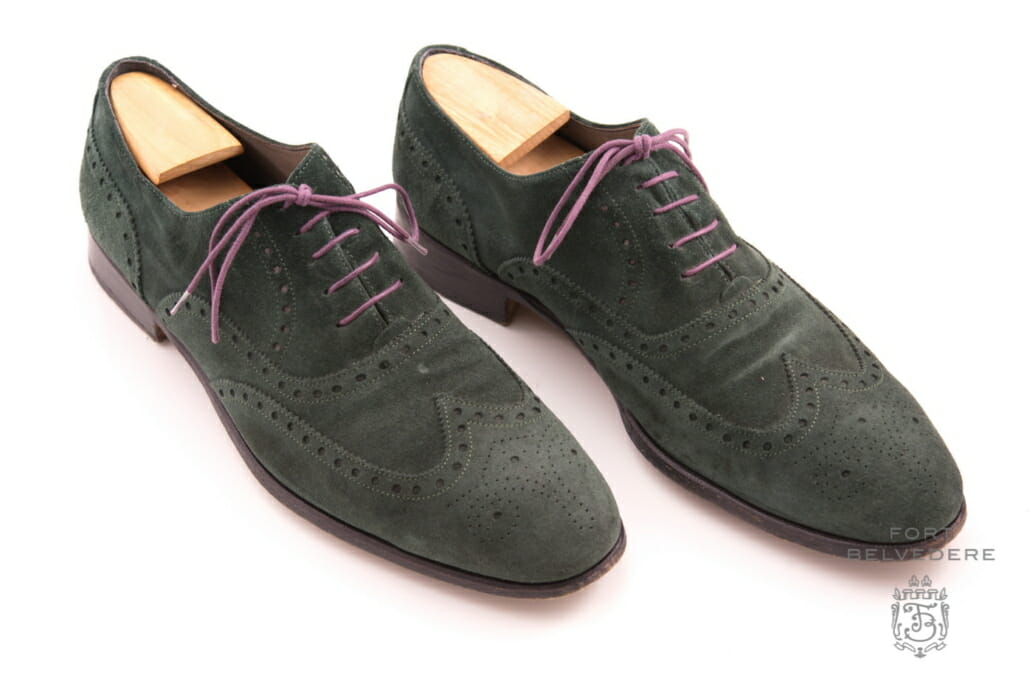
Conclusion
From its rustic, alpine origins to its time as the fabric of choice for the Austrian royal family and nobility, the loden coat stands today as a maximally versatile, elegant option for the fall and winter months. Whether you opt for one in the signature green shade or in a different hue, you can be sure that a loden coat will keep you both warm and stylish for decades to come.
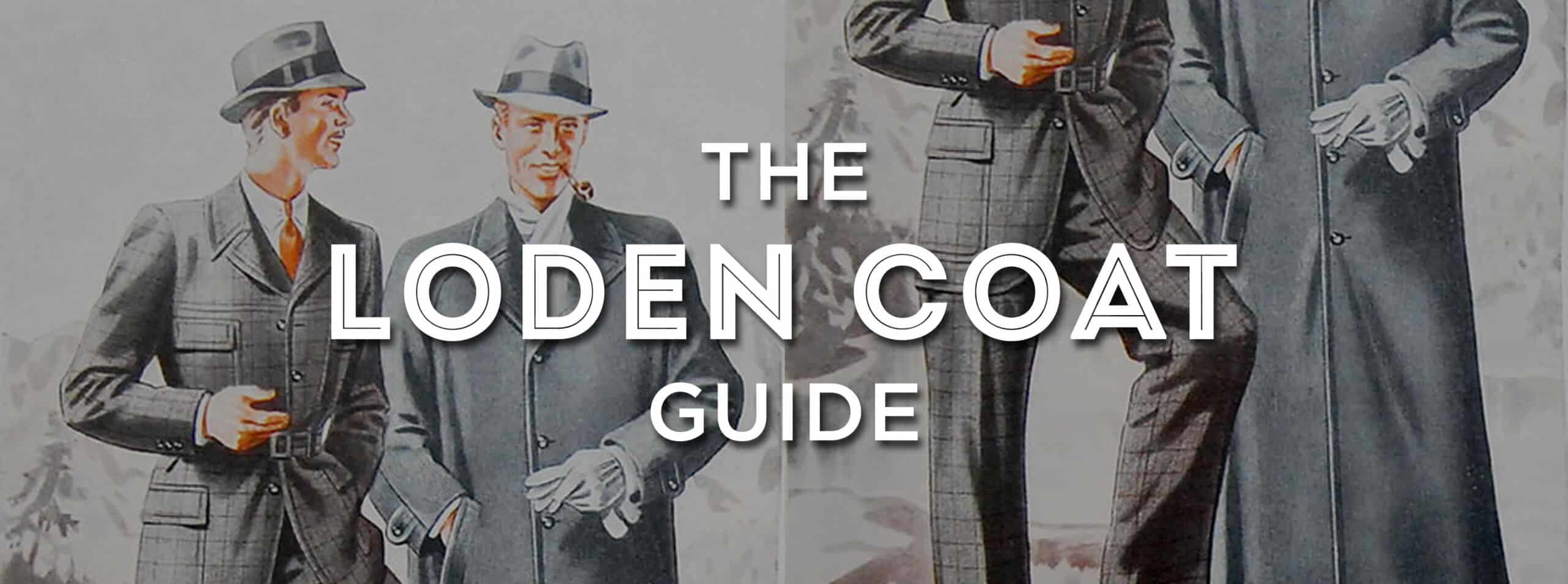
Just a correction from a European perspective. The most popular colours are green and followed by navy blue. If you are in Munich visit Loden Fry shop for all your loden needs. Equally all over Bavaria and Austria you will find an excellent range of loden coats and jackets. The coats should be worn just beneath the knee unless you are a local !
Thank you for this article. I would agree with the first comment, from a Paris perspective: a blue loden overcoat (rather a dark blue than a marine one) remains popular alonside the classical green loden. I confess I sometimes wear a pair of (Huh, should I say “classical”?) 501 blue jeans together with a loden overcoat, and it works quite well in my eyes, with the laid back look of the jeans balancing the outdated look of the overcoat (yes, I know it hurts to admit it) and giving it a new flavour.
Sven, you have an amazing talent for finding classic vintage wardrobe items. What is the approximate age of the checked green in Tweed jacket?
I have purchased 4 Loden coats for my wife and I from the Robert W. Stolz company. A beautifully made product, excellent costumer service, high quality fabric. I have no official connection with company except for my purchases. I encourage all to evaluate this terrific fabric.
Thanks for sharing, Curtis!
– it’s difficult to believe at the moment, with these bushfires and routine 40C days, but it gets quite bracing here in Adelaide in the middle of winter.
-At these times I rely on an Alpaca Loden overcoat from Salko….classic cape cut with hidden buttons. It needs a hat, of course, and I find my Loden Green soft Orvis Trilby matches.
Just the job
An interesting article about something I don’t know much about. However I think it would’ve been more effective to have some images of actual loden coats and perhaps where to find them, rather than vintage catalogs and pics of Sven in various outfits.
Another great and informative piece, thank you. I have two loden models; one in green, a “shooting” coat by Moessmer, purchased at Brooks Brothers, the other in Navy with a fly button front (a bit more formal) purchased at Landau in Princeton. Landau is the best choice for loden coats in the area with a great sales staff.
Thank you for your comment, Dante!
I was having trouble finding loden in the U.S. I came across the Robert Stolz site and bought two coats, for me and my wife. I was very impressed with the quality and service. Like Curtis, I have no affiliation with them. Their website shows lots of images.
A big shout out to Sven and his crew for providing us with such a great resource.
Thank you, Sven, for this great article, I asked you to do/include an article on the loden overcoat just over a year ago after purchasing a beautiful secondhand one, which I love, of all the items I own, this loden coat has by far got the most compliments of all the things I own… due to maybe no-one else in the part of Ireland wearing one, like yourself I have a lots of overcoats however if had to replace one, it would definitely be with another classic green loden coat, the first photo of Fabio Attanasio wearing his is the one I have, cheers Gerry,
Thanks a lot for sharing, Gerry!
An article that fails to actually describe the design and features of Loden Coats, but dwells on what other clothes and accessories to wear alongside the coat. Sorry, but the vintage magazine catalogue pages didn’t do it. Also no mention of what heritage and modern day brands can supply. All the article informs me about is the Loden material and it’s origin.
I’m surprised that there is no mention here of the unique cut and style of the traditional Loden coat, as worn in Austria and southern Germany. There, as you rightly note, Loden has always had a very functional role to fill—primarily protection, and insulation, of course.
But the unique and distinctive silhouette of the archetypal “Loden Mantel” is essentially a hunting garment. It often goes by the name “Hubertus Mantel” being named after the 8th-century patron saint of hunting, St. Hubertus of Liège. There are several vital design elements that set apart a Loden/Hubertus Mantel from an overcoat of any other material or style:
(1) Sleeves that are set inside an overhanging shoulder structure;
(2) Open arm holes, to provide greater freedom of movement (when raising a hunting rifle, for instance);
(3) A long, deep inverted pleat running the length of the back of the garment, beneath the shoulder seam, that provides additional fabric for greater movement of the legs (while climbing, for instance);
(4) A fastening for the long collar, which permits greater warmth;
(5) Leather buttons.
Most “authentic” Hubertus coats are unlined, assuming that the wearer is in motion and thus does not need to be over-insulated.
Like his father, the Duke of Windsor took to wearing Austrian and Alpine garments and during the 1920s and effected a popular transference of European sporting attire into the more formal world of masculine elegance. This he achieved by wearing sporty, green wool Alpine hats and the occasional Joppe, or Tracht jacket. For many years he shopped at Dschulnigg in Salzburg, which is still in business today!
One can find Loden overcoats in a variety of styles today—from car jackets to longer affairs with Raglan-shoulders. These however are the exception and mark a deviation from the archetypal value of Loden as the perfect intersection of comfort, elegance, and the sporting life!
So, along with the miraculous properties of Loden—light weight, fantastic insulating ability, water resistant, and a gorgeous and lustrous finish—it is the style and cut of a traditional Loden coat that is its most distinguishing characteristic.